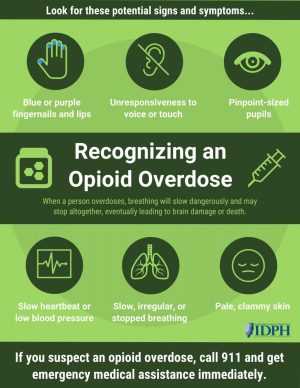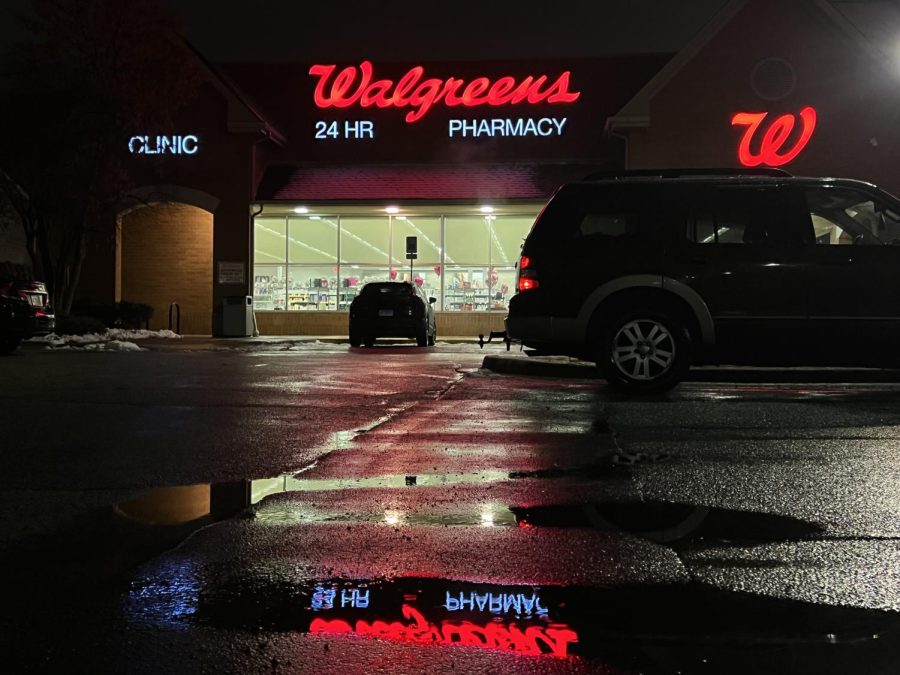The department of health
January 17, 2023
Though pharmacies like Walgreens have been named in a lawsuit that claims there was little oversight and regulation when filling opioid prescriptions, the Illinois States Attorney concedes that they are not the sole reason for the epidemic. Pharmaceutical companies could not comment on their practices due to the pending litigation.
To keep McHenry County informed, the Department of Health releases an “Opioid Surveillance Report” monthly. It details emergency department visits and opioid overdoses, along with data on the race, ethnicity and age of those affected.
In November, around Thanksgiving, McHenry County saw an increase in suspected opioid overdose deaths and ED visits. Local organizations at the time released a “community alert” reporting increased use of Naloxone in the County.
“IDPH and CDC have presented data that suggests overdoses increase in the holiday season due to stress,” Epidemiology Lead Ryan Sachs and Prevention and Response Lead Chrissy Wasson wrote in an email. “This could potentially explain the recent increase … however, we [can’t] determine if this is the exact reason.”
In McHenry County, overdose deaths predominantly occur among males aged 20-29 who identify as non-Latino or Hispanic white. Many substances contribute to the epidemic locally, but one, in particular, contributes to overdoses the most: fentanyl.

“These groups generally have the highest rates of substance use in McHenry County as well,” Sachs and Wasson added. “The recent spike in fatal overdoses that were seen in 2020 was due to fentanyl. This is the main substance involved in fatal overdoses in 2021-2022 as well.”
A few years back, the MCDH launched its Opioid Surveillance, Prevention and Response Program to respond to the opioid crisis. It uses surveillance data and information from community partners to determine increases in overdoses and deaths, called clusters.
“In response to clusters,” Sachs and Wasson wrote, “we send out communications to the Opioid Surveillance Workgroup, professionals in this domain and the community.”
The workgroup includes community members involved in opioid prevention and response activities, such as the Substance Abuse Coalition, law enforcement, hospitals and emergency medical services. Members work to communicate information and develop responses to clusters.
“MCDH has also created an Overdose Prevention and Response Team that distributes resources, education and Naloxone in the community,” Sachs and Wasson added. “Naloxone can be obtained for free at both Health Department locations. MCDH also provides presentations … in the schools.”
Sachs and Wasson add that several Illinois laws aid the community in addressing the opioid epidemic. For example, the Hospital Licensing Act requiring hospitals to report overdose treatment within 48 hours aids in collecting data for the Opioid Surveillance Report.
The “Good Samaritan” Act also protects individuals using opioids and those helping in case of an overdose. It allows a person to call 911 or go to an emergency room without being prosecuted for possessing certain drugs.
“The state [also] has a policy that allows any organization or community member to request Narcan [Naloxone brand] from the state for free,” Sachs and Wasson added. “This allows many organizations, including MCDH, to give out Narcan to the public.”
Even when no opioid-related clusters occur, the MCDH regularly meets with the Opioid Surveillance Workgroup to evaluate changes in the opioid epidemic and discuss surveillance, prevention and response initiatives.
“There have not been any major changes in the opioid epidemic this year in comparison to previous years,” Sachs and Wasson conclude. “Based on current data, our fatal and non-fatal overdoses are on track to be lower for 2022 in comparison to previous years.”
